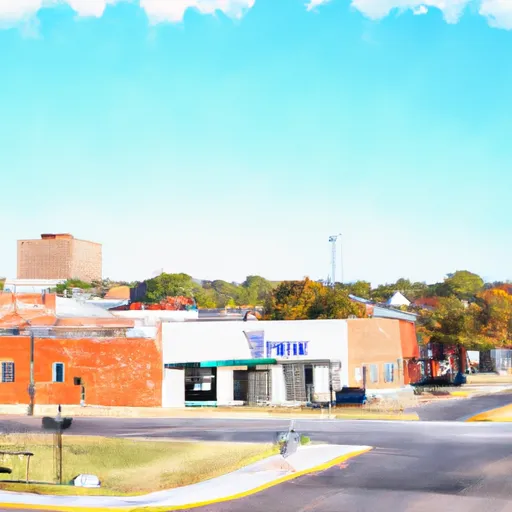-
 Snoflo Premium
Snoflo Premium
Get unlimited access to all our content
With no Ad interruptions! - Start Your Free Trial Login with existing account
Iredell
Eden Index
Climate
9.8
•
Recreation
1.7
•
Community
0.6
•
Safeguard
4.7/10

Iredell, Texas is a small rural community located in Bosque County, in the central part of the state. The town is characterized by its picturesque landscapes and a pleasant climate. Iredell experiences a humid subtropical climate, with hot summers and mild winters. Average high temperatures range from the 90s°F (32°C) in summer to the 50s°F (10°C) in winter, while average low temperatures range from the 70s°F (21°C) in summer to the 30s°F (-1°C) in winter.
The hydrology constituents of Iredell mainly revolve around the nearby Bosque River, which provides essential water resources to the area. The river supports a diverse ecosystem and offers opportunities for fishing, boating, and wildlife observation. The rolling hills surrounding Iredell provide a scenic backdrop for outdoor enthusiasts, with plenty of opportunities for hiking, camping, and exploring nature.
With its beautiful natural surroundings and favorable climate, Iredell offers a charming and peaceful atmosphere for those seeking outdoor recreational activities. Whether it's spending time by the Bosque River or enjoying the scenic landscapes, visitors and residents alike can find solace and adventure in the outdoors of Iredell, Texas.
What is the Eden Index?
The Snoflo Eden Index serves as a comprehensive rating system for regions, evaluating their desirability through a holistic assessment of climate health, outdoor recreation opportunities, and natural disaster risk, acknowledging the profound impact of these factors on livability and well-being.
Climate Health Indicator (CHI): 9.8
Iredell receives approximately
857mm of rain per year,
with humidity levels near 74%
and air temperatures averaging around
19°C.
Iredell has a plant hardyness factor of
8, meaning
plants and agriculture in this region tend to thrive here all year round.
By considering the ideal temperature range, reliable water supplies, clean air, and stable seasonal rain or snowpacks, the Climate Health Indicator (CHI) underscores the significance of a healthy climate as the foundation for quality living.
A healthy climate is paramount for ensuring a high quality of life and livability in a region, fostering both physical well-being and environmental harmony. This can be characterized by ideal temperatures, reliable access to water supplies, clean air, and consistent seasonal rain or snowpacks.
Weather Forecast
Streamflow Conditions
Middle Brazos-Bosque
Area Rivers
Middle Brazos-Bosque
Snowpack Depths
Middle Brazos-Bosque
Reservoir Storage Capacity
Middle Brazos-Bosque
Groundwater Levels
Recreational Opportunity Index (ROI): 1.7
The Recreational Opportunity Index (ROI) recognizes the value of outdoor recreational options, such as parks, hiking trails, camping sites, and fishing spots, while acknowledging that climate plays a pivotal role in ensuring the comfort and consistency of these experiences.
Access to outdoor recreational opportunities, encompassing activities such as parks, hiking, camping, and fishing, is crucial for overall well-being, and the climate plays a pivotal role in enabling and enhancing these experiences, ensuring that individuals can engage in nature-based activities comfortably and consistently.
Camping Areas
| Campground | Campsites | Reservations | Toilets | Showers | Elevation |
|---|---|---|---|---|---|
| Jim Hogg - Lake Georgetown | None | 880 ft | |||
| Russell Park - Georgetown Lake | 21 | 898 ft | |||
| Cedar Breaks - Lake Georgetown | None | 841 ft | |||
| Muleshoe Bend - Lake Travis | None | 809 ft | |||
| West Fort Hood RV Military | None | 987 ft | |||
| Sandy Creek - Lake Travis | None | 699 ft | |||
| Pace Bend Park - Lake Travis | 420 | 781 ft | |||
| Faunt Leroy City Park | 11 | 750 ft | |||
| Cypress Creek - Lake Travis | None | 804 ft | |||
| Meridian State Park | 15 | 1,010 ft |
Nearby Ski Areas
Catastrophe Safeguard Index (CSI):
The Catastrophe Safeguard Index (CSI) recognizes that natural disaster risk, encompassing floods, fires, hurricanes, and tornadoes, can drastically affect safety and the overall appeal of an area.
The level of natural disaster risk in a region significantly affects safety and the overall livability, with climate change amplifying these risks by potentially increasing the frequency and intensity of events like floods, fires, hurricanes, and tornadoes, thereby posing substantial challenges to community resilience and well-being.
Community Resilience Indicator (CRI): 0.6
The Community Resilience Indicator (CRI) recognizes that education, healthcare, and socioeconomics are crucial to the well-being of a region. The CRI acknowledges the profound impact of these elements on residents' overall quality of life. By evaluating educational resources, healthcare accessibility, and economic inclusivity, the index captures the essential aspects that contribute to a thriving community, fostering resident satisfaction, equity, and social cohesion.

